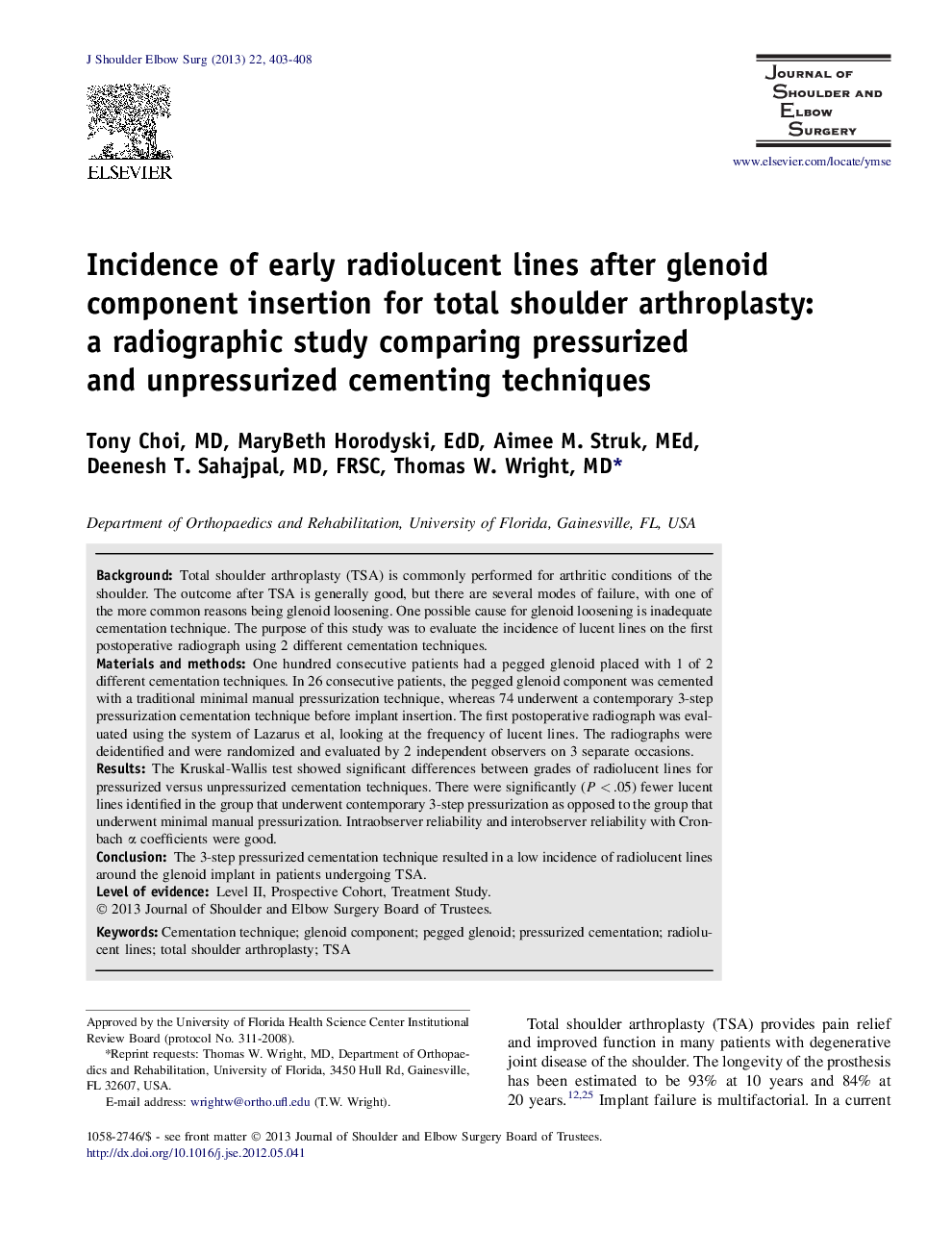| کد مقاله | کد نشریه | سال انتشار | مقاله انگلیسی | نسخه تمام متن |
|---|---|---|---|---|
| 4075210 | 1267032 | 2013 | 6 صفحه PDF | دانلود رایگان |

BackgroundTotal shoulder arthroplasty (TSA) is commonly performed for arthritic conditions of the shoulder. The outcome after TSA is generally good, but there are several modes of failure, with one of the more common reasons being glenoid loosening. One possible cause for glenoid loosening is inadequate cementation technique. The purpose of this study was to evaluate the incidence of lucent lines on the first postoperative radiograph using 2 different cementation techniques.Materials and methodsOne hundred consecutive patients had a pegged glenoid placed with 1 of 2 different cementation techniques. In 26 consecutive patients, the pegged glenoid component was cemented with a traditional minimal manual pressurization technique, whereas 74 underwent a contemporary 3-step pressurization cementation technique before implant insertion. The first postoperative radiograph was evaluated using the system of Lazarus et al, looking at the frequency of lucent lines. The radiographs were deidentified and were randomized and evaluated by 2 independent observers on 3 separate occasions.ResultsThe Kruskal-Wallis test showed significant differences between grades of radiolucent lines for pressurized versus unpressurized cementation techniques. There were significantly (P < .05) fewer lucent lines identified in the group that underwent contemporary 3-step pressurization as opposed to the group that underwent minimal manual pressurization. Intraobserver reliability and interobserver reliability with Cronbach α coefficients were good.ConclusionThe 3-step pressurized cementation technique resulted in a low incidence of radiolucent lines around the glenoid implant in patients undergoing TSA.
Journal: Journal of Shoulder and Elbow Surgery - Volume 22, Issue 3, March 2013, Pages 403–408